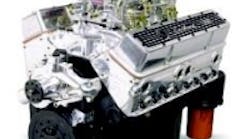Labor costs need attention
In the May 23, 1955, issue, Editor Burnham Finney pointed out that the urge to increase manufacturing efficiency should be irresistible for companies, since labor costs were on the rise and prices were tending upward. He suggested manufacturers use the latest machines to raise the productivity of their workers. Another idea was for companies to provide their men and machines with as much automation as possible.
According to Finney, these two actions constituted the best-possible guarantee against getting caught in an upward spiral that might easily upset costs and, hence, profits.
Beauty is in the eye of the beholder
Ford sent it to the design department for analysis. Said the report, in effect: "The material is not up to Ford standards, and the color is suitable only for the type of person who likes to wear charcoal suits and pink shirts."
Ford sent for the writer of the report, and met him at his office door, wearing (you've guessed it) a charcoal suit and a pink shirt.
Machine tool builders are put to task
Another May 23 item detailed a talk by Rodger J. Emmert, General Motors executive in charge of facilities and process staff, at a recent NMTBA meeting. Emmert said GM put quality at the top of its list (based on opinions gathered from a survey of General Motors Corp. master mechanics). GM's desire was to have machinery that would maintain tighter tolerances because statistical methods of analysis often pointed out that certain machine tools were unable to maintain proper tolerances.
Specifically, GM wanted equipment that would permit an operator to produce more parts or accomplish more desired work than on its current systems. In addition, the company was looking for better ways of loading or passing parts from one operation to another without the aid of an employee.


